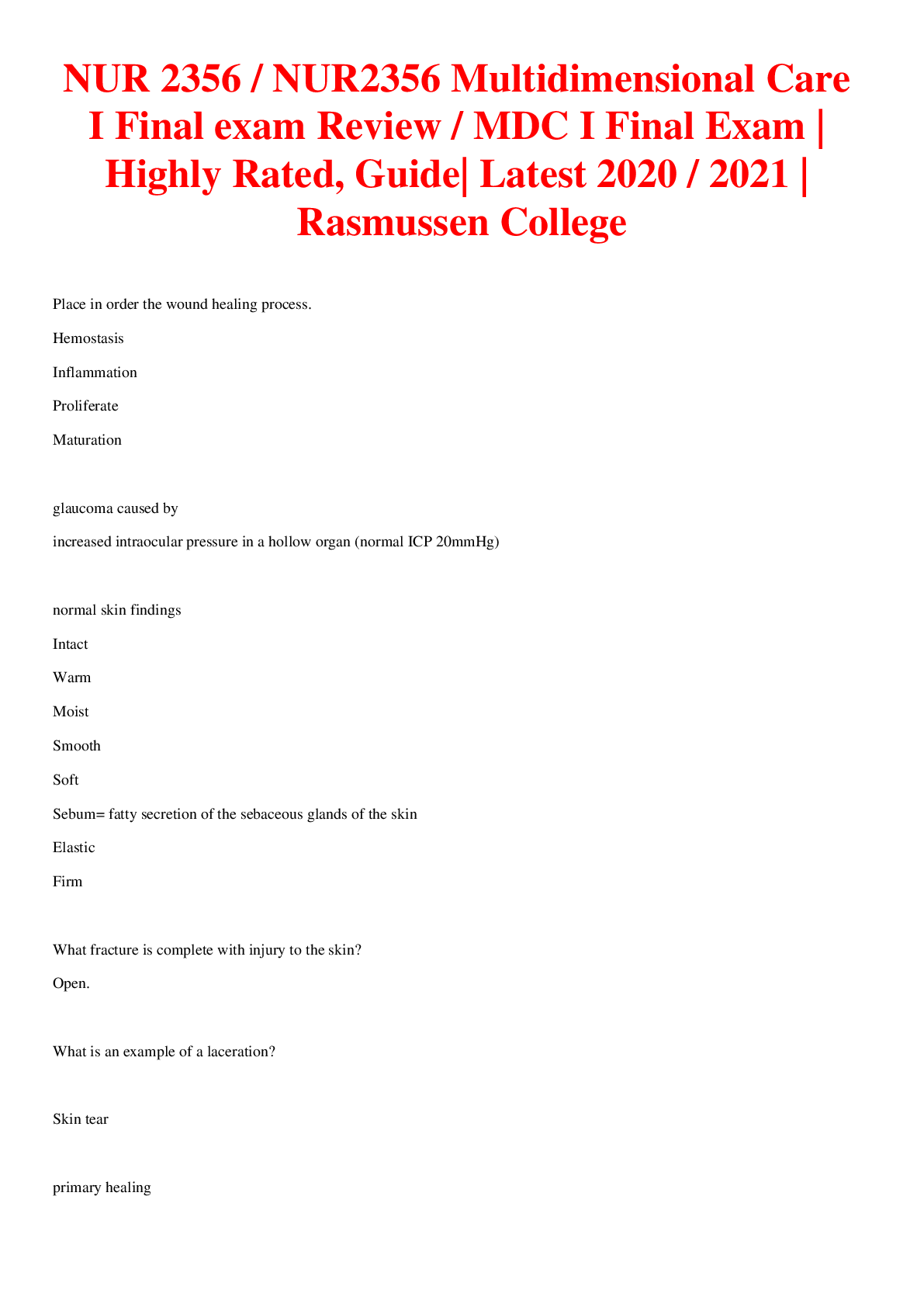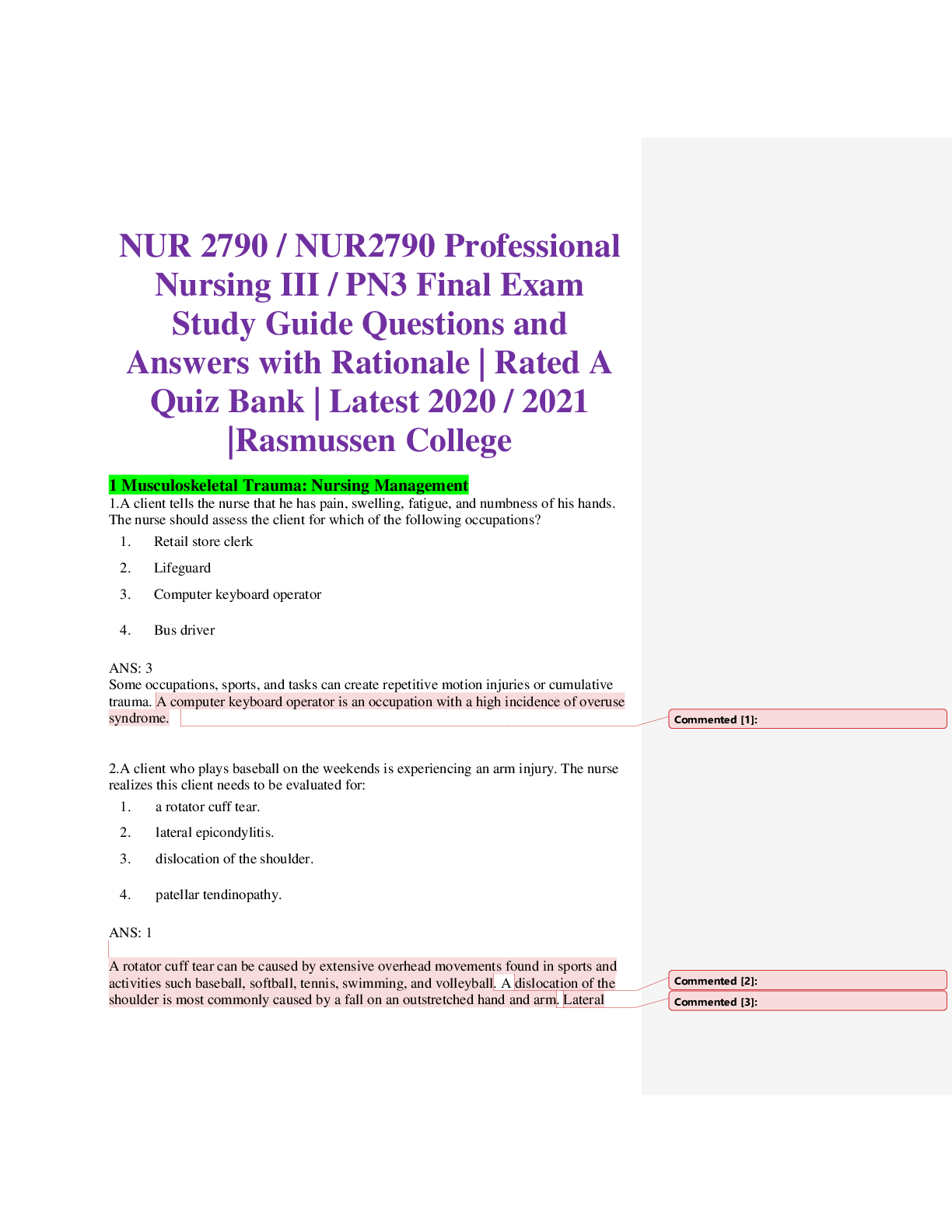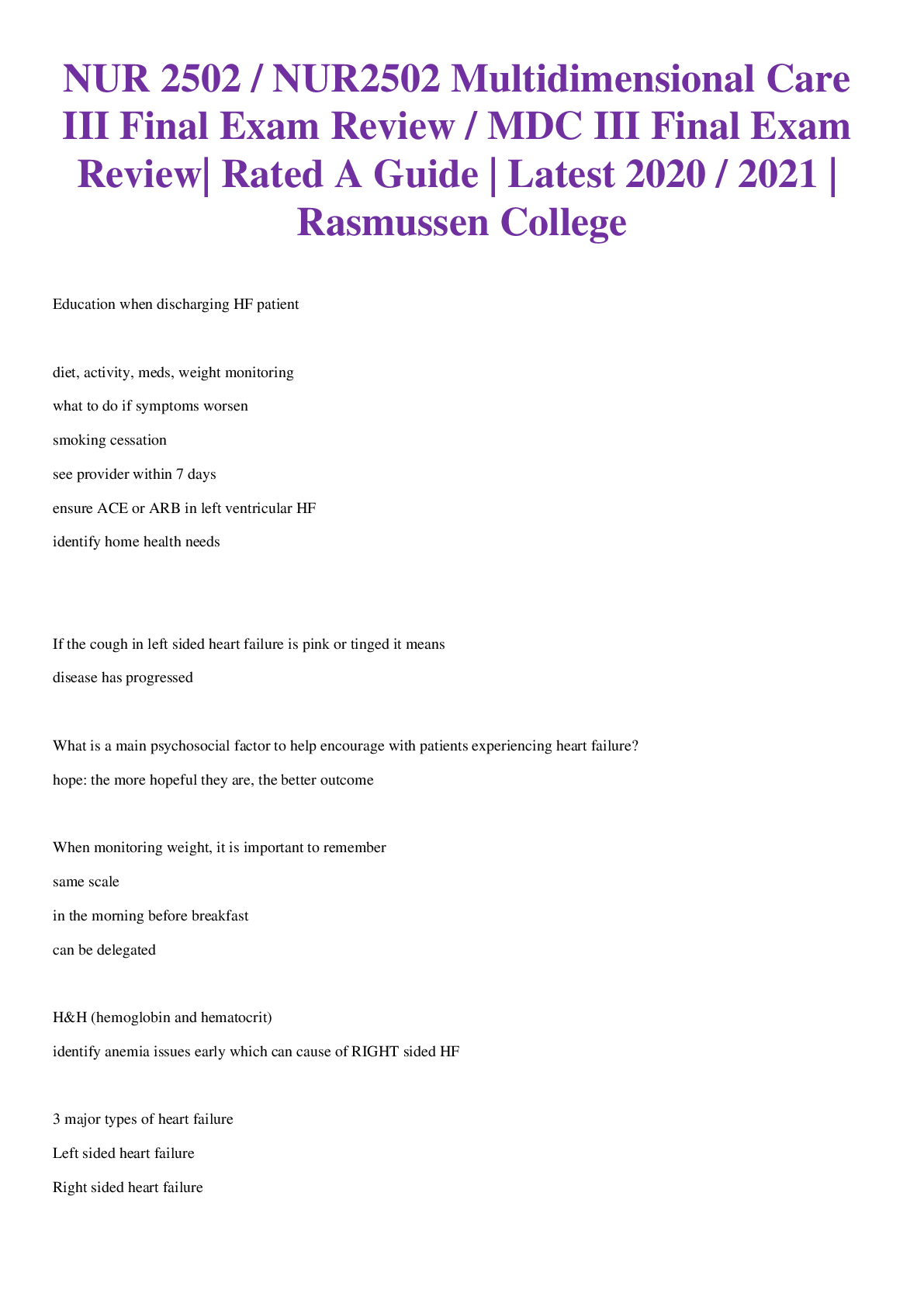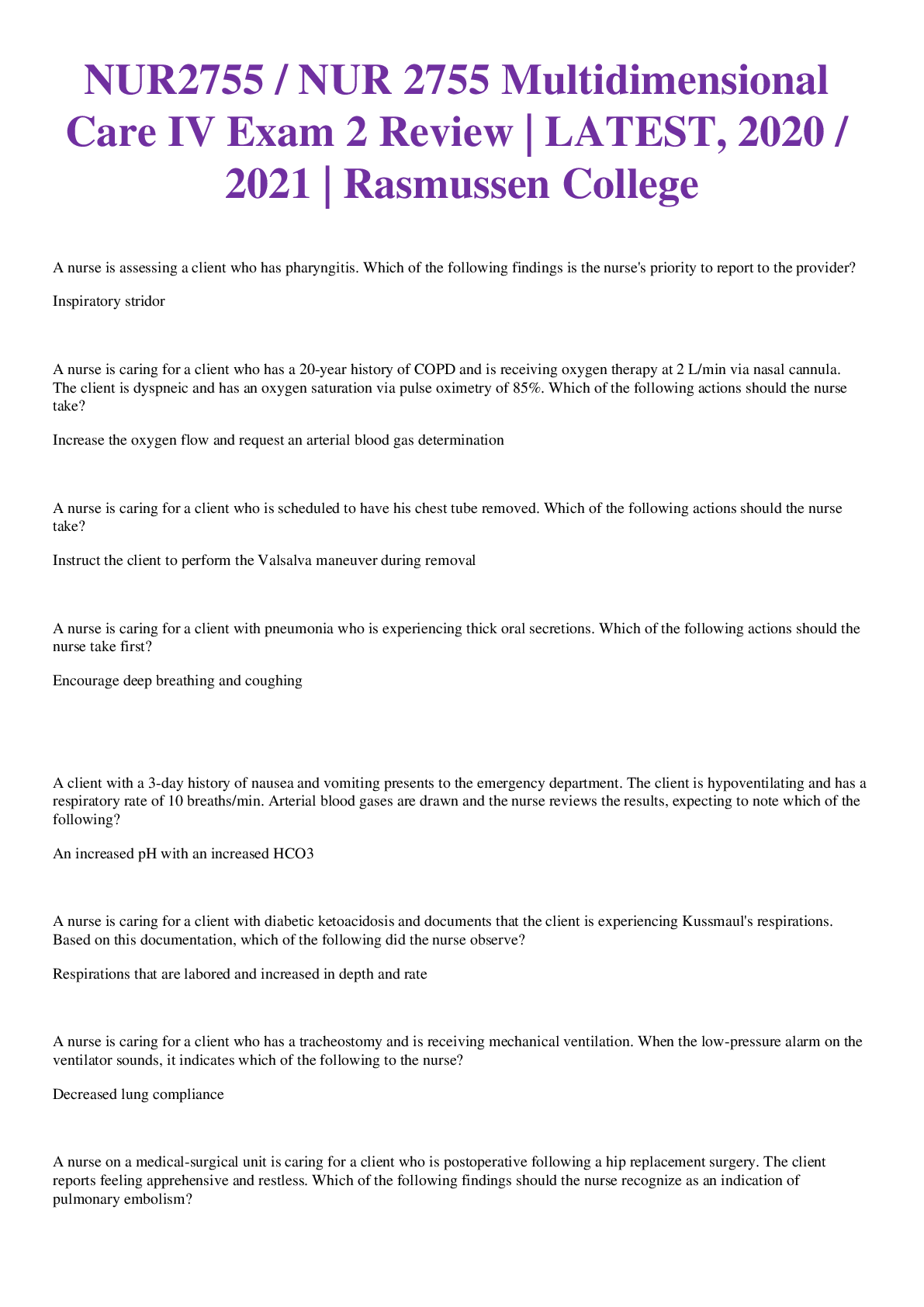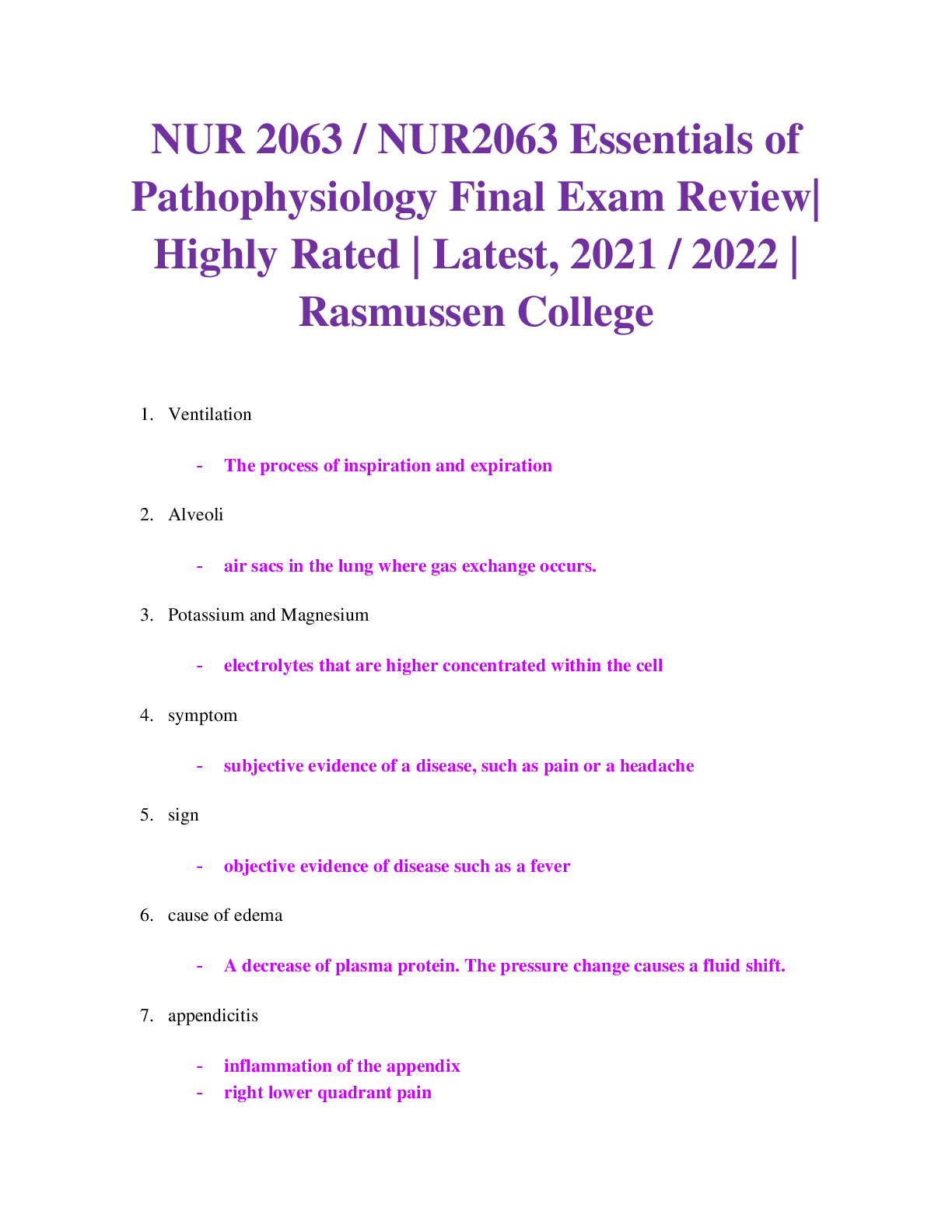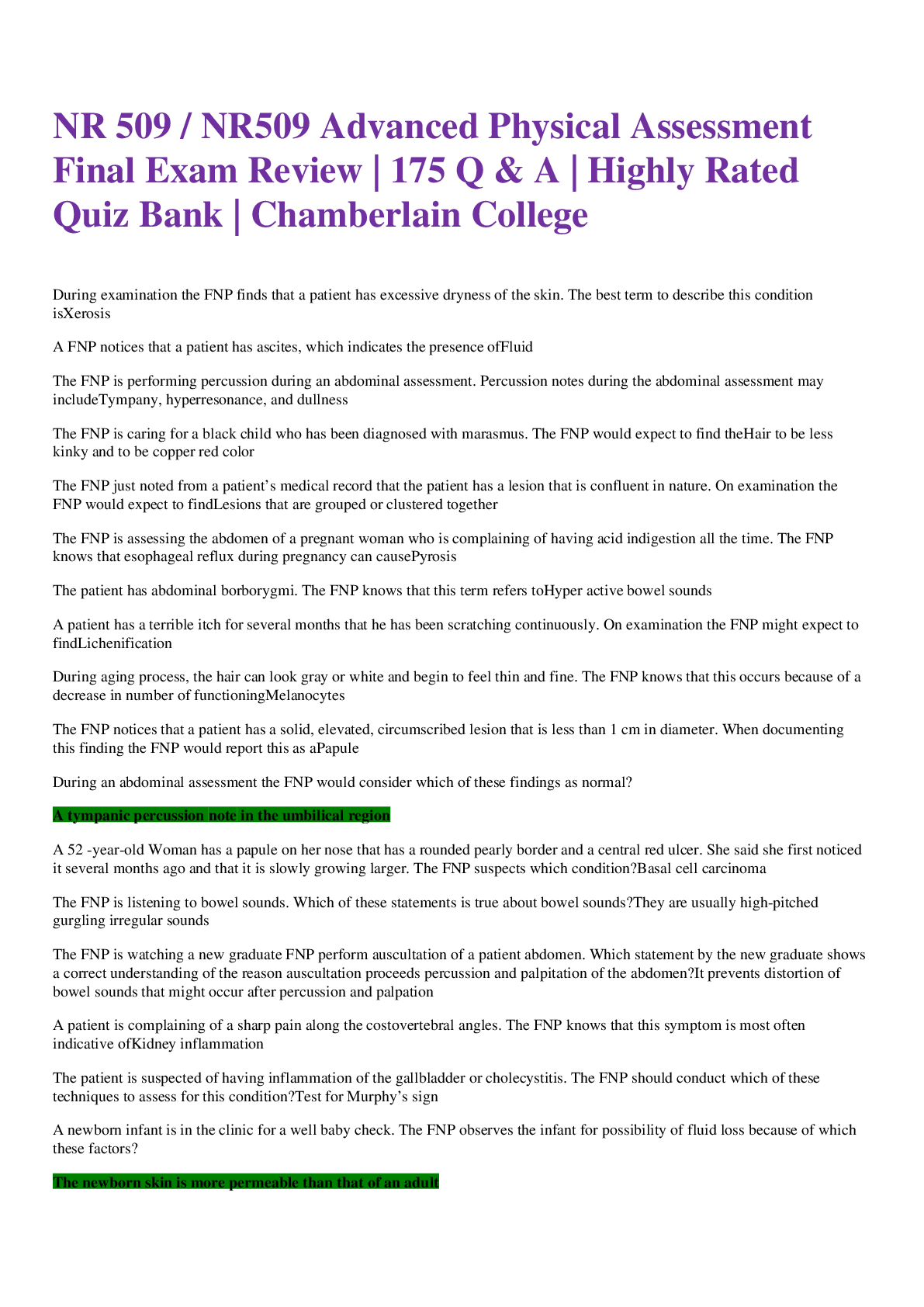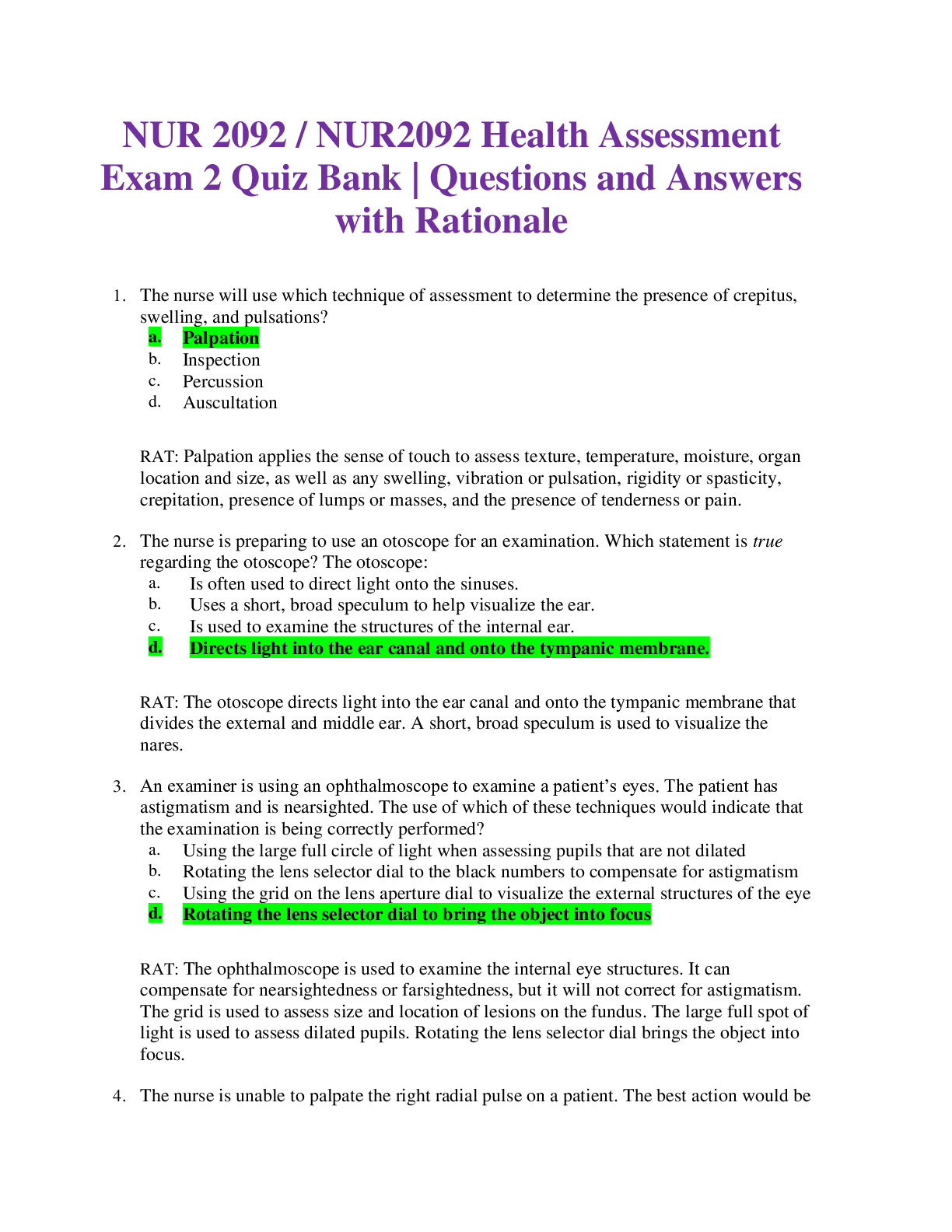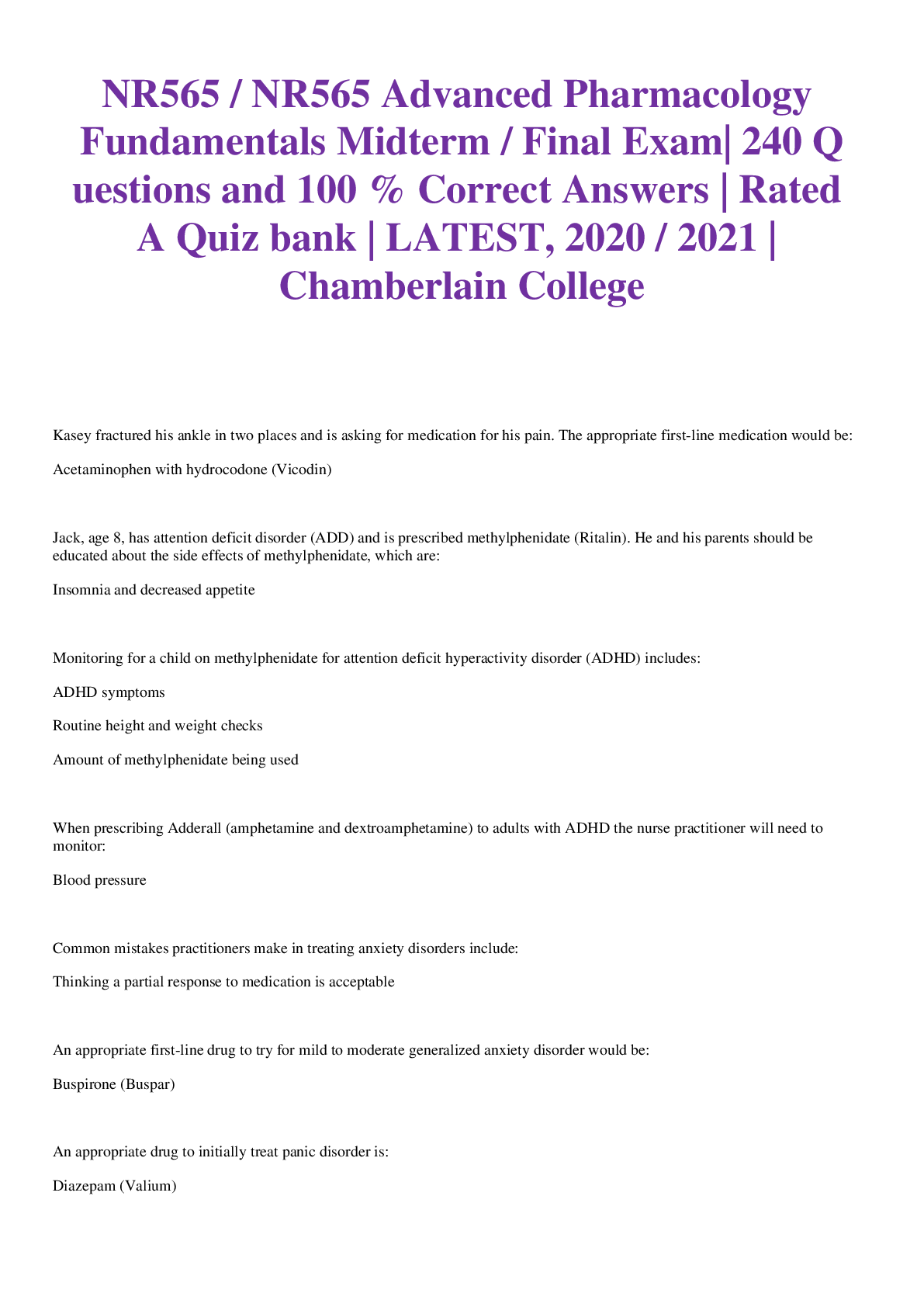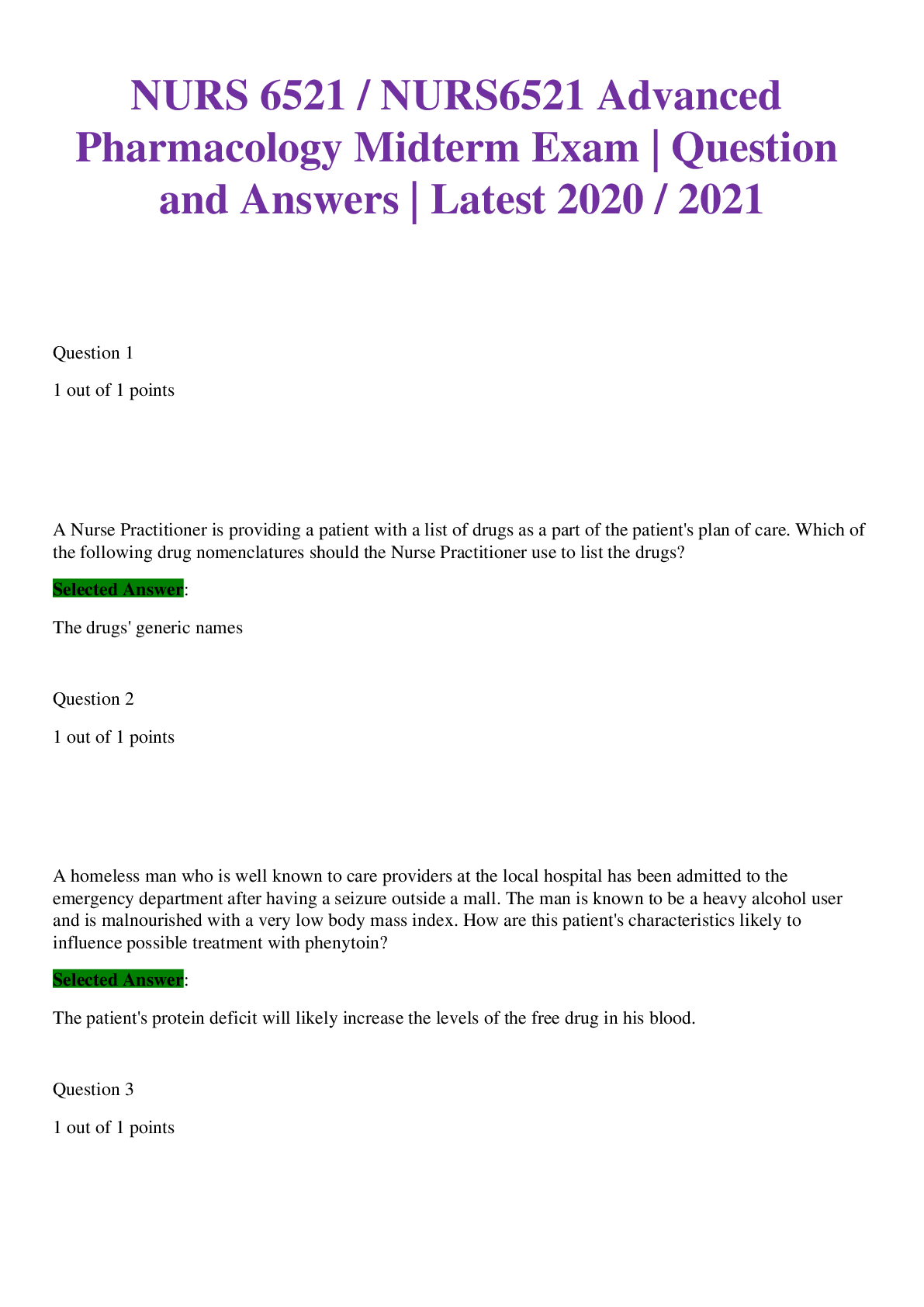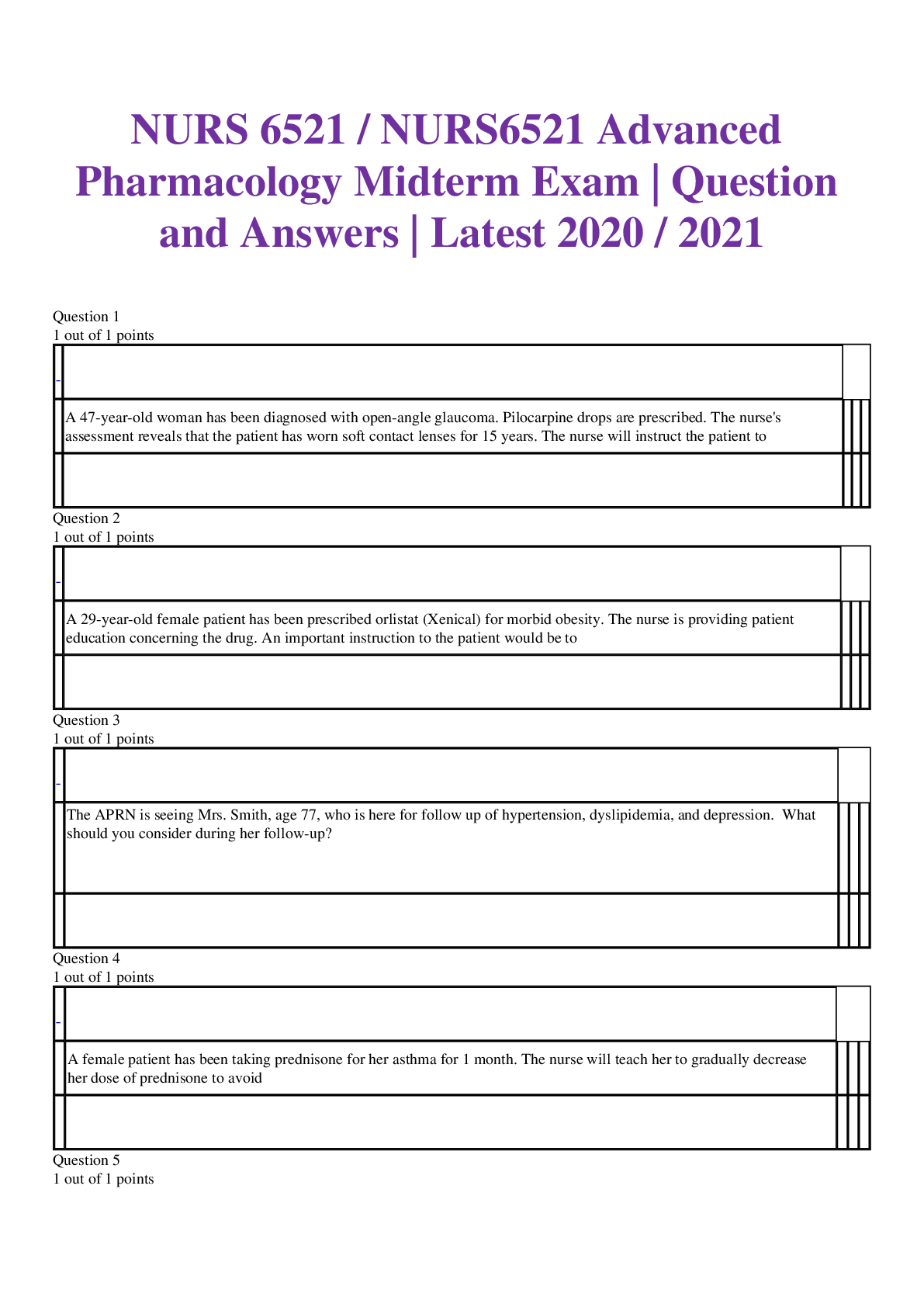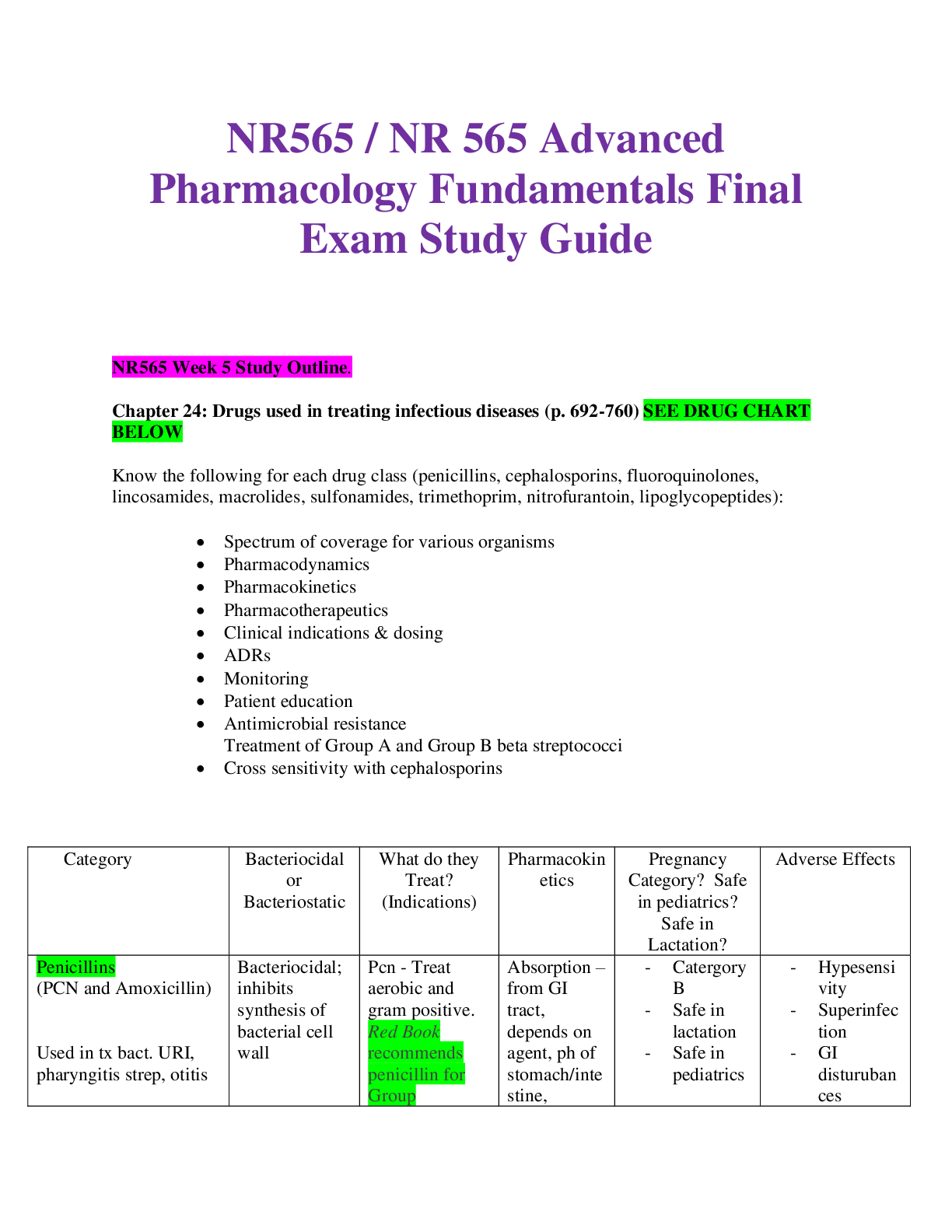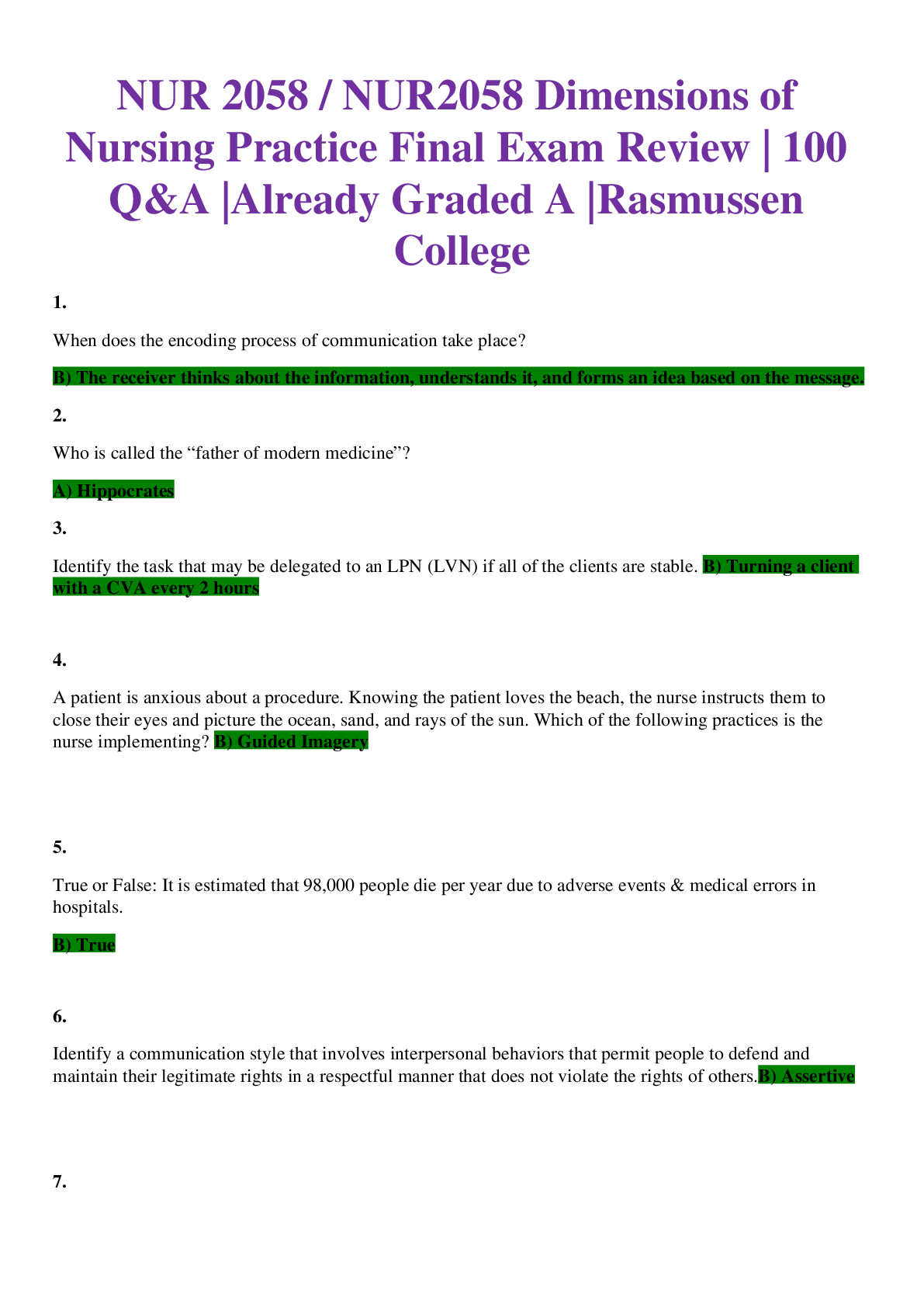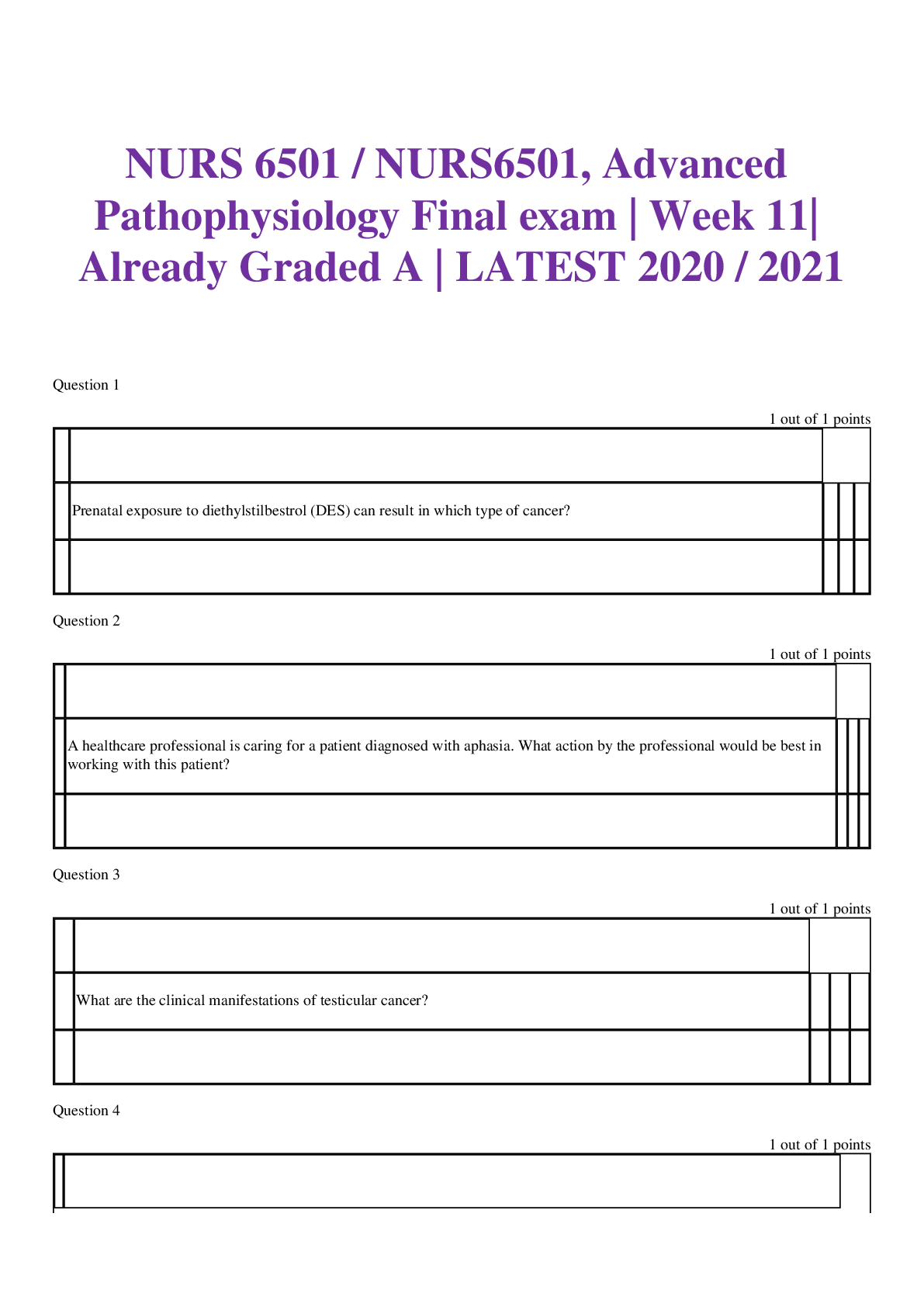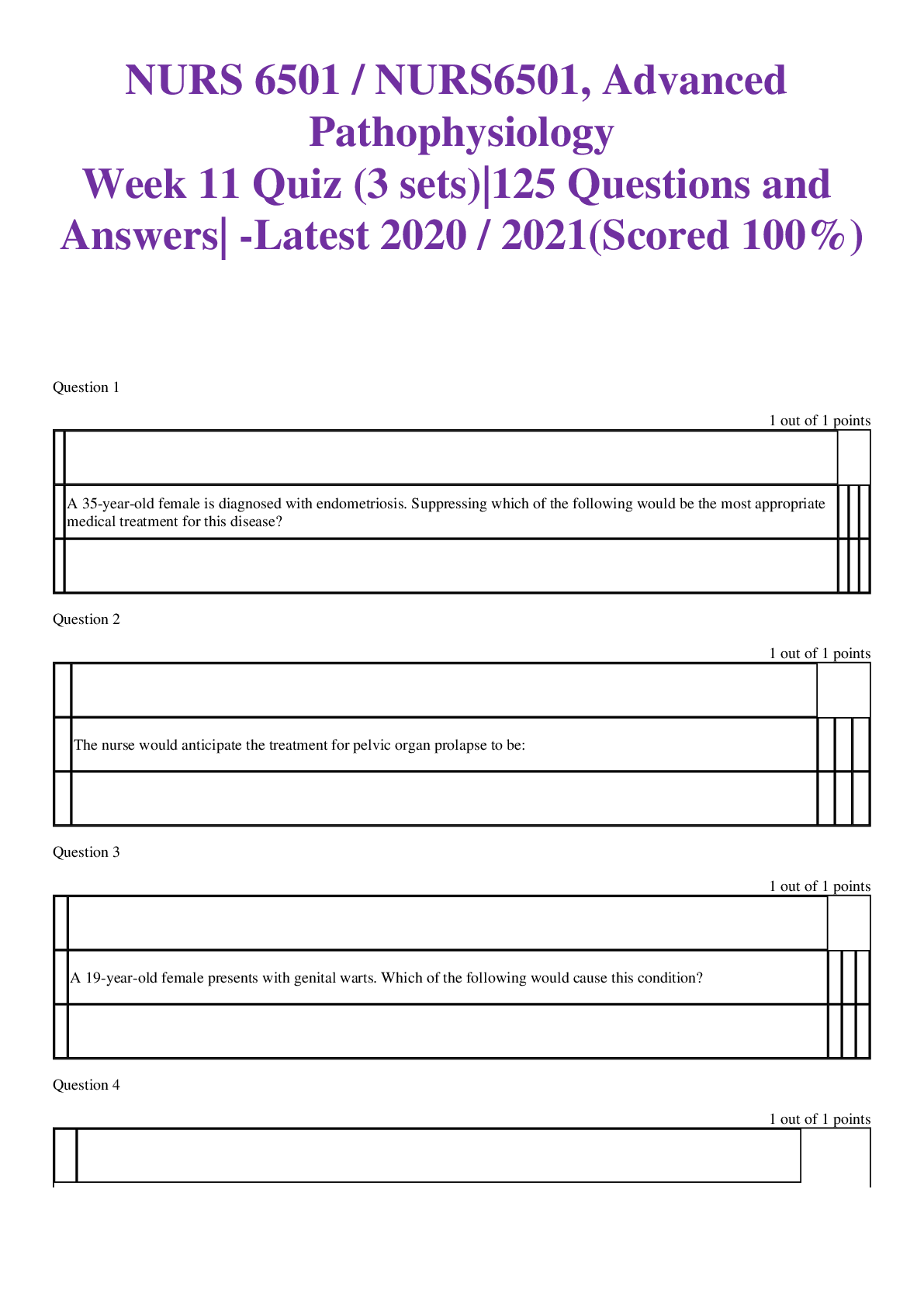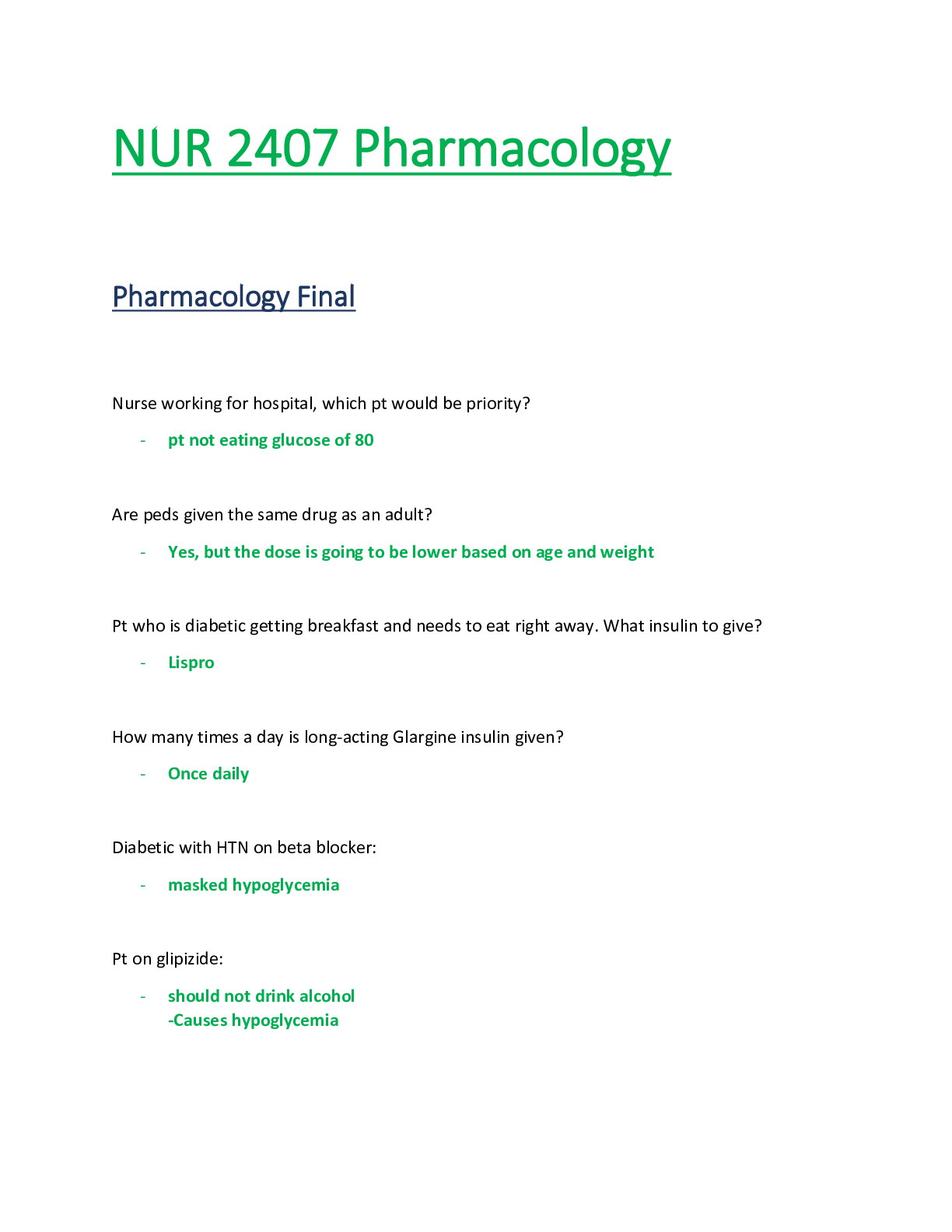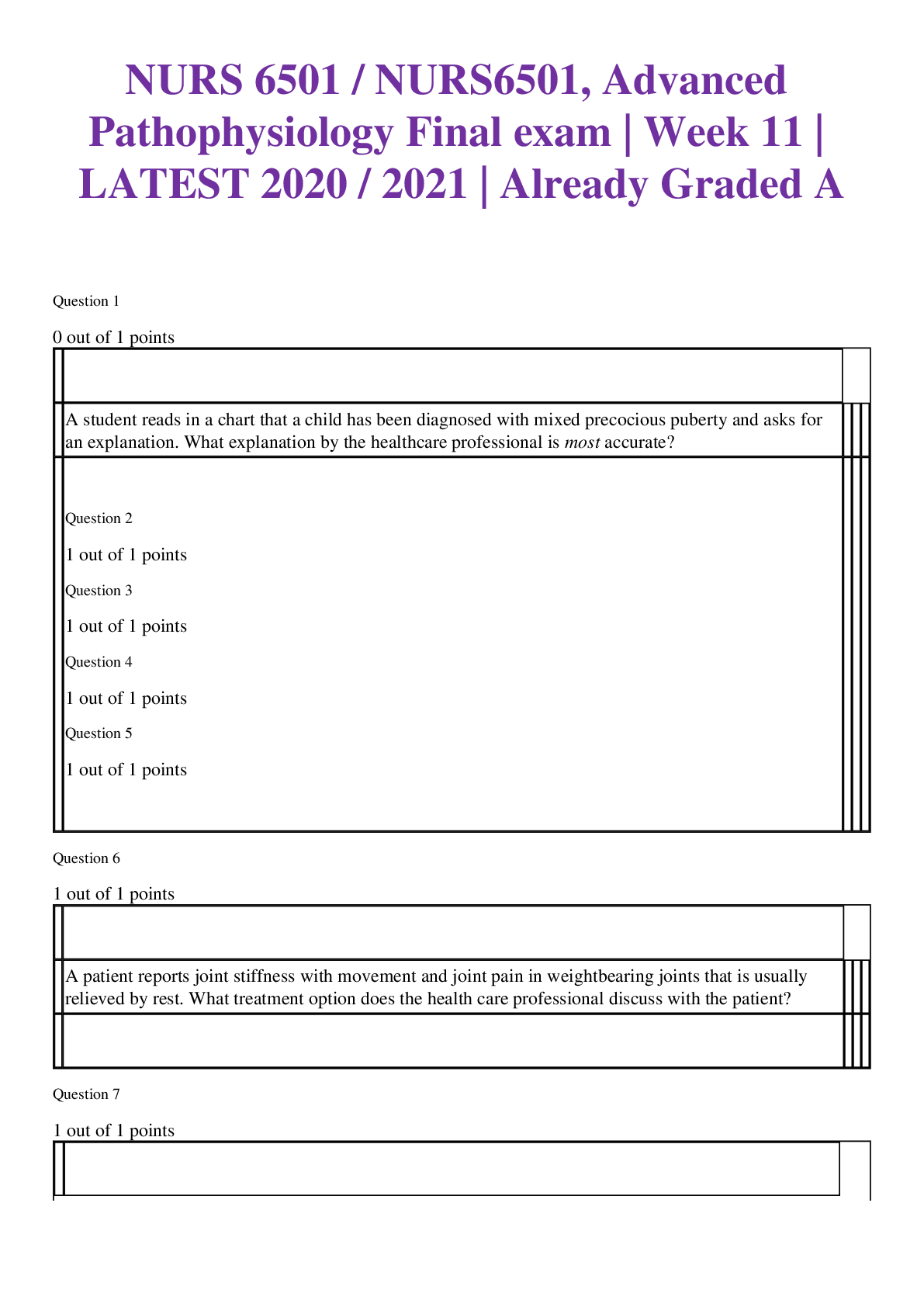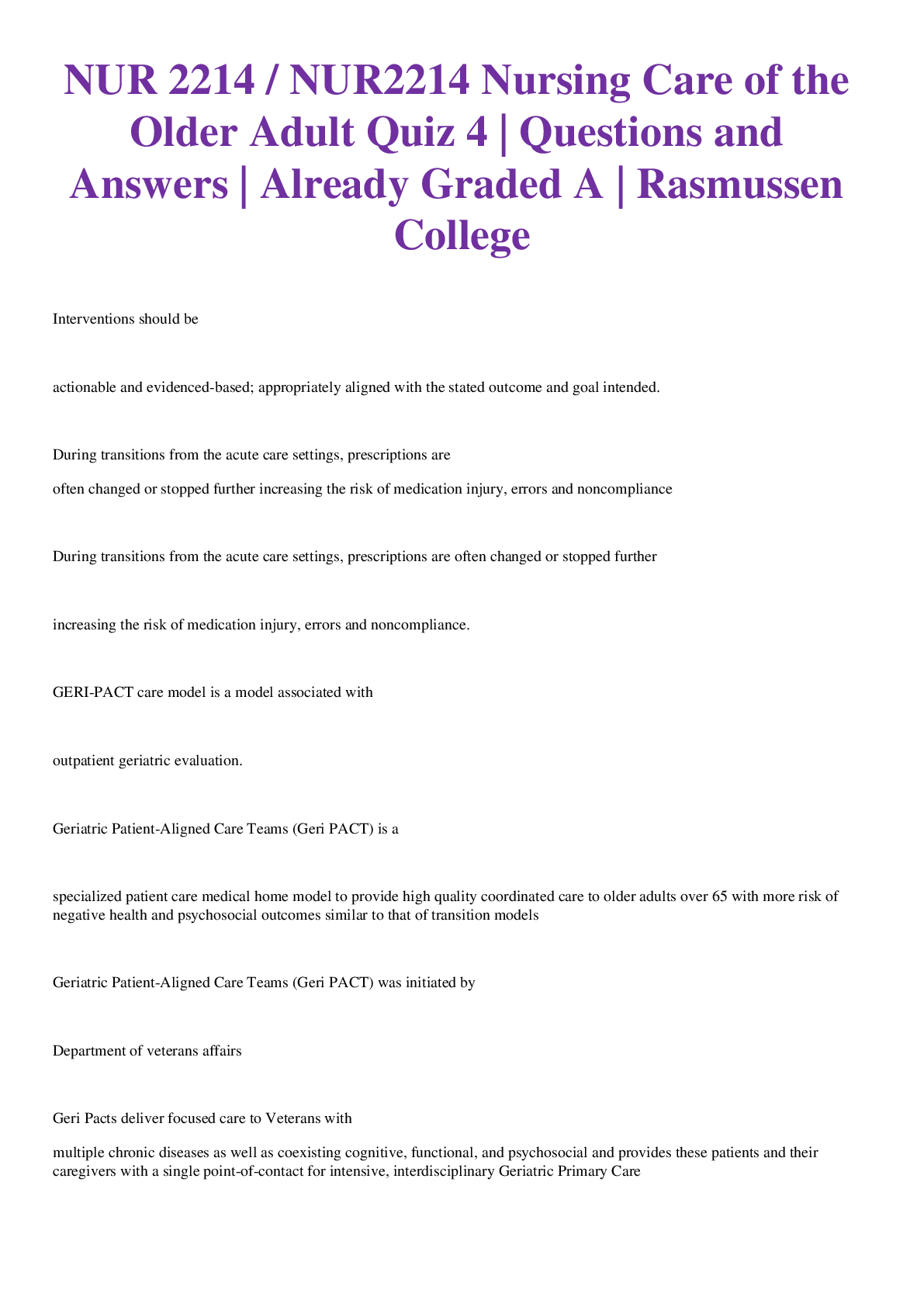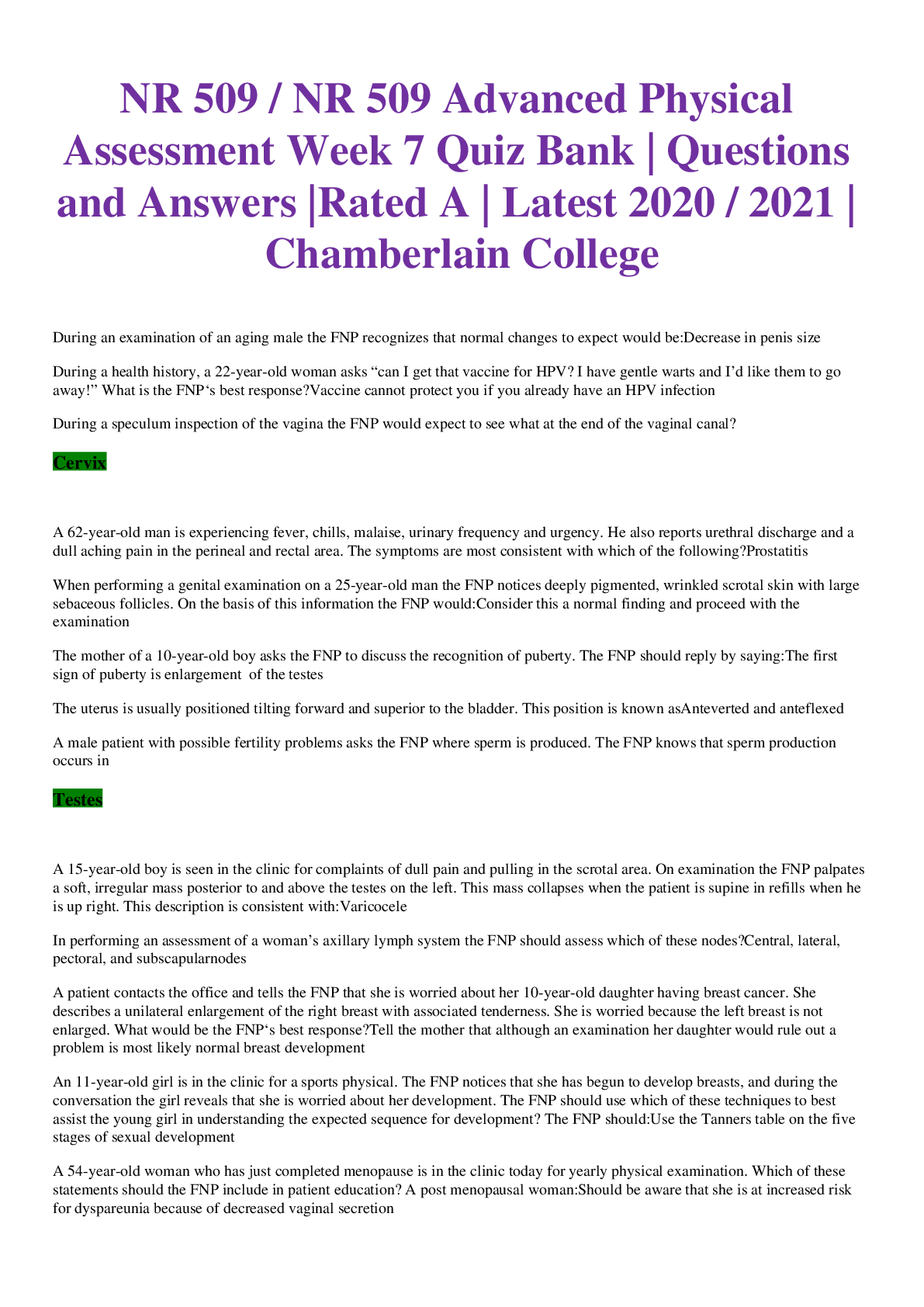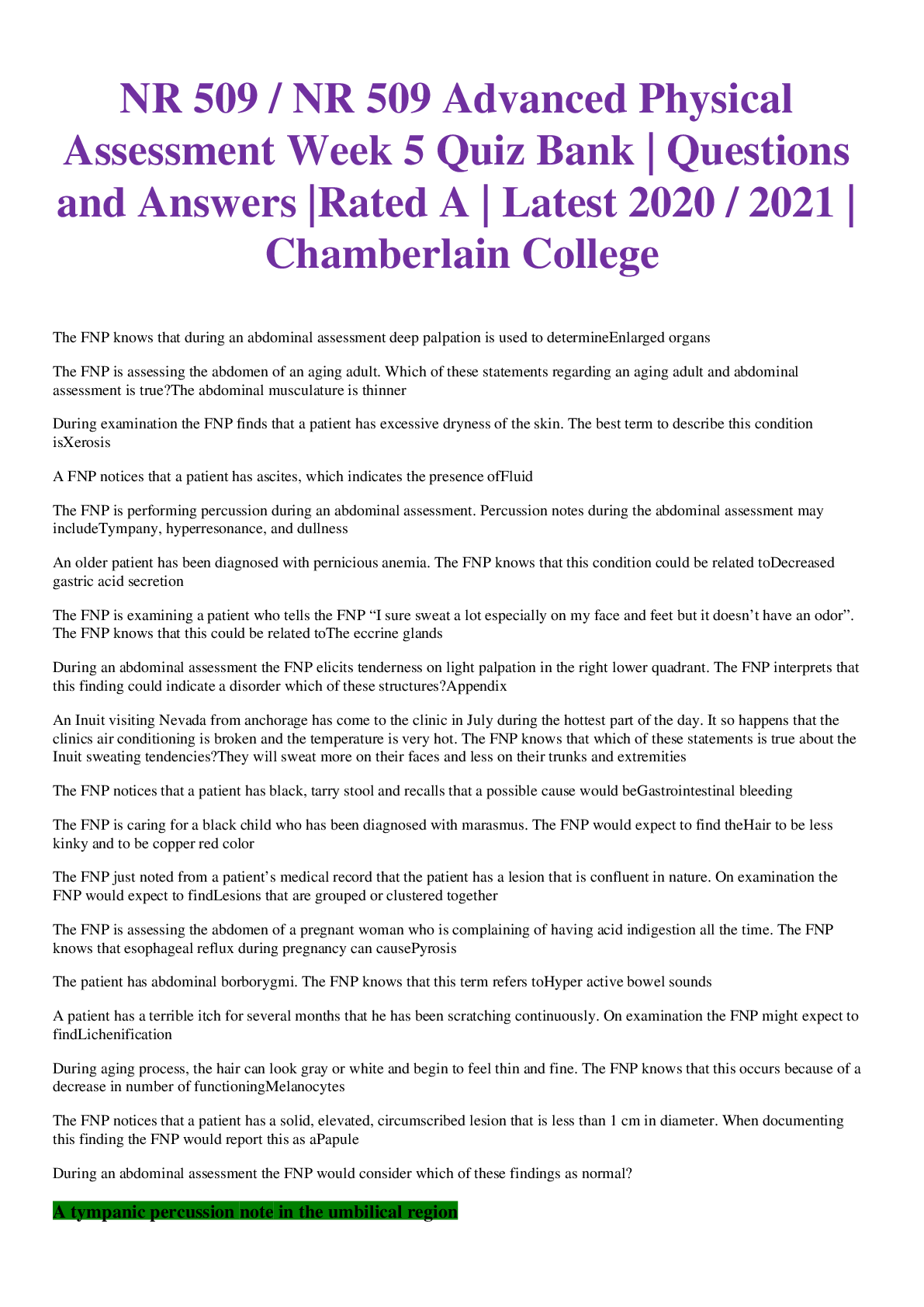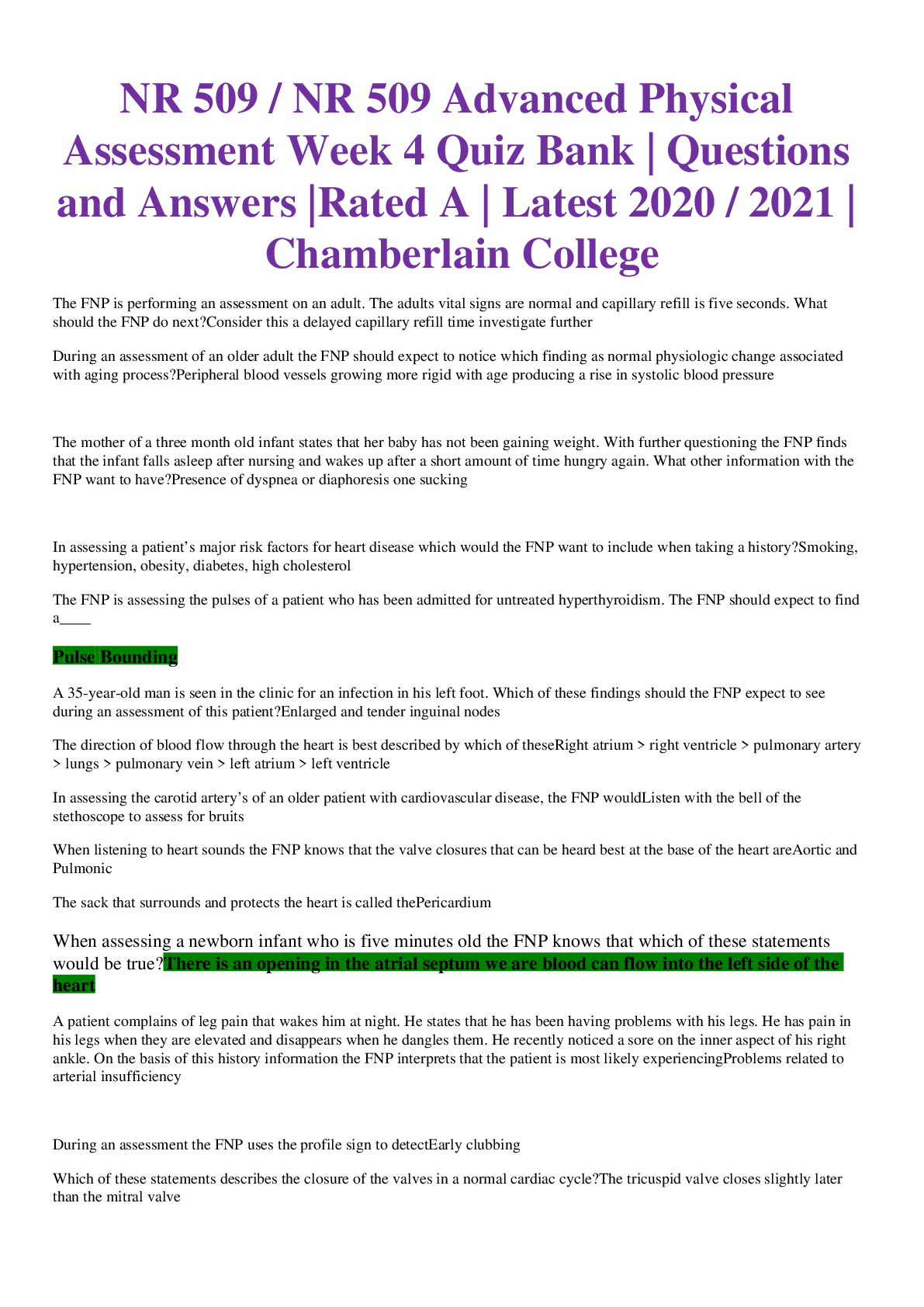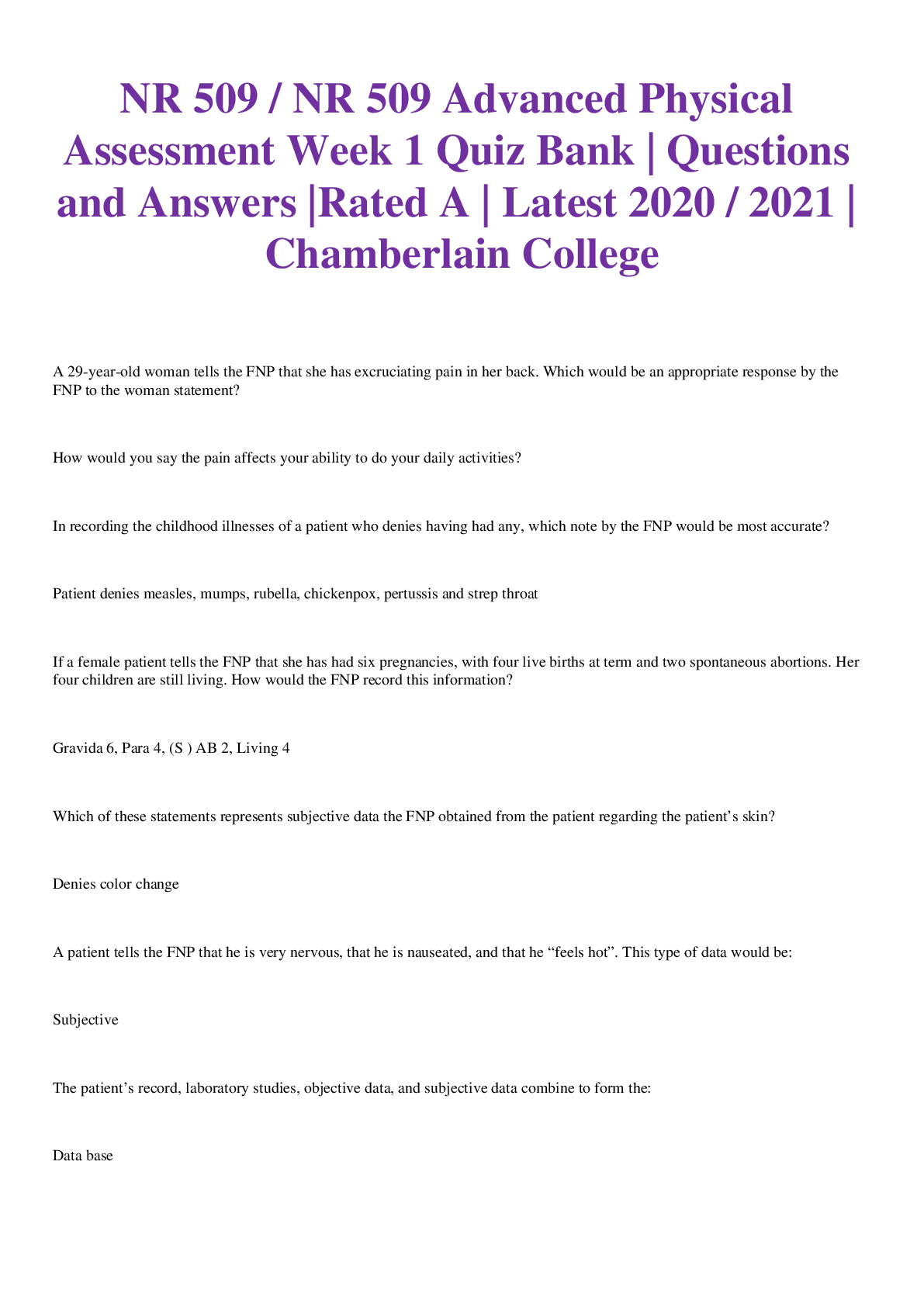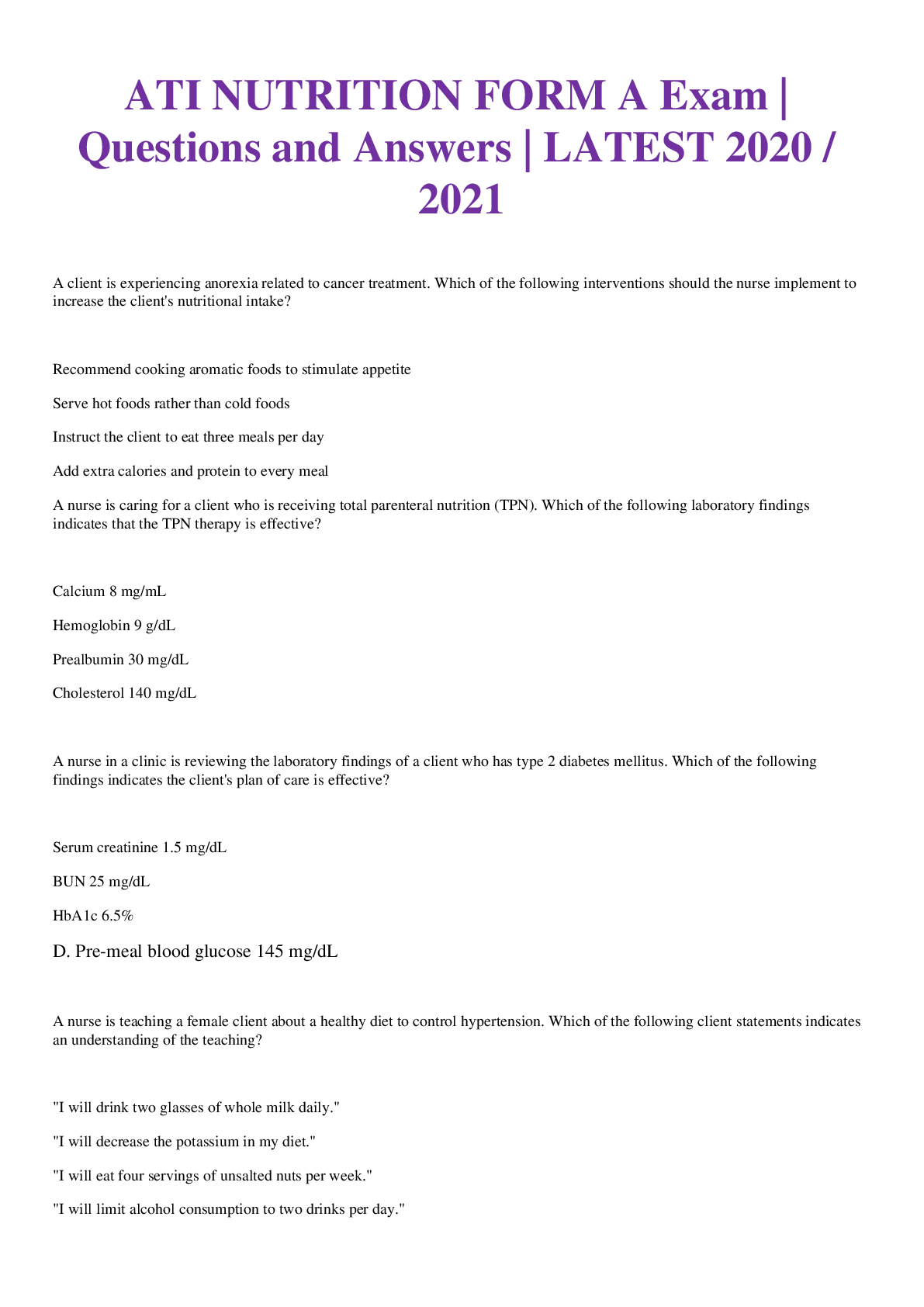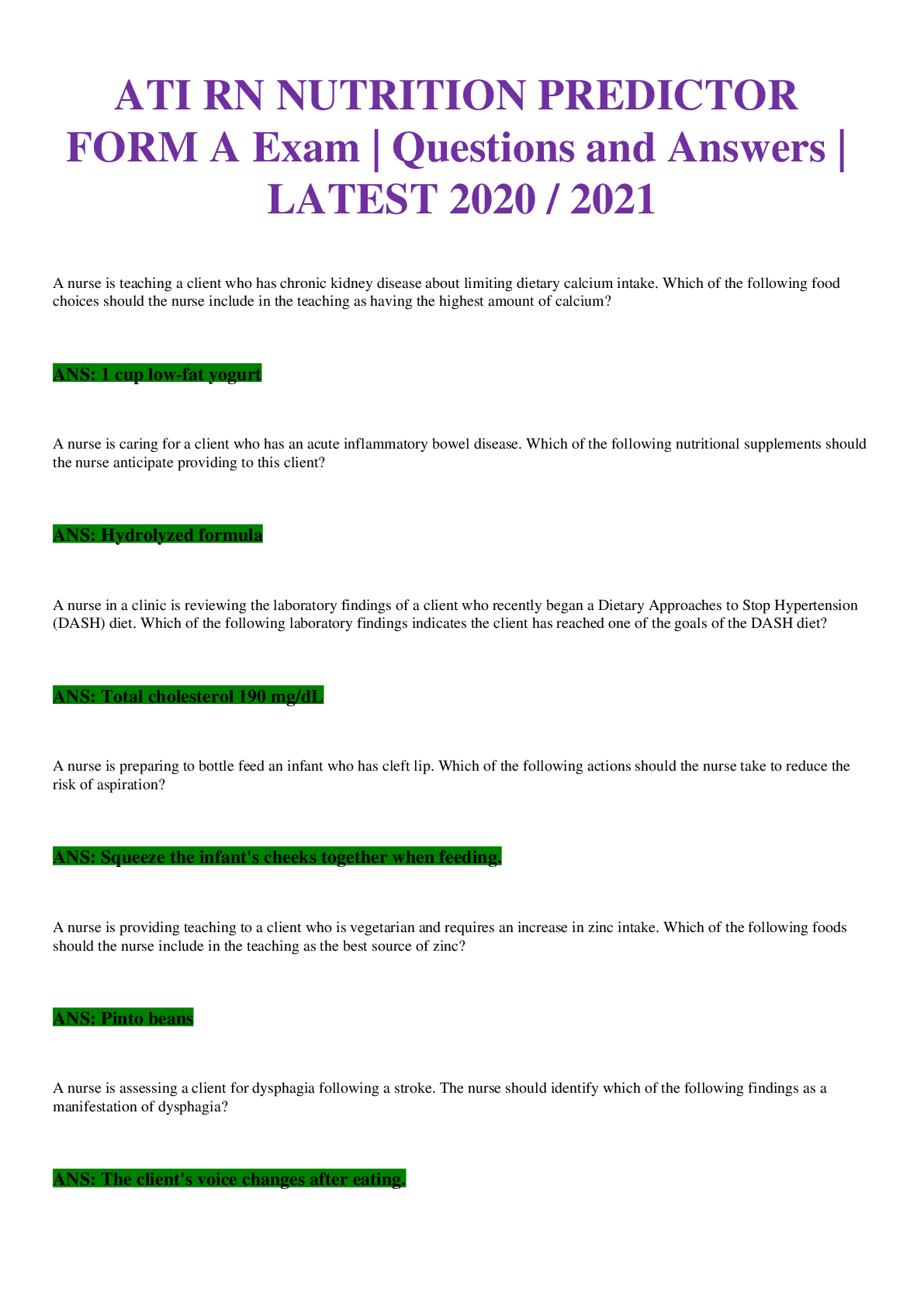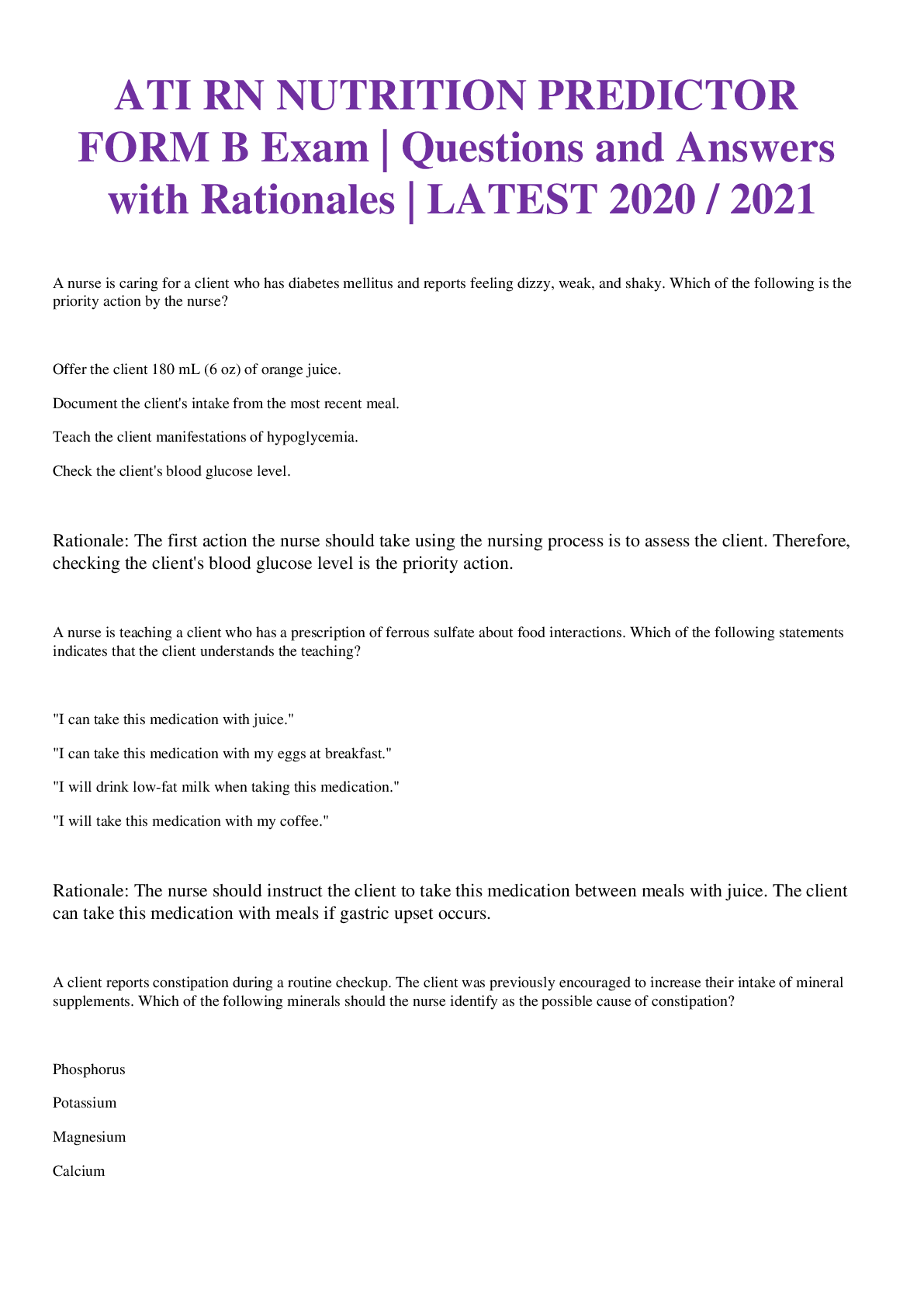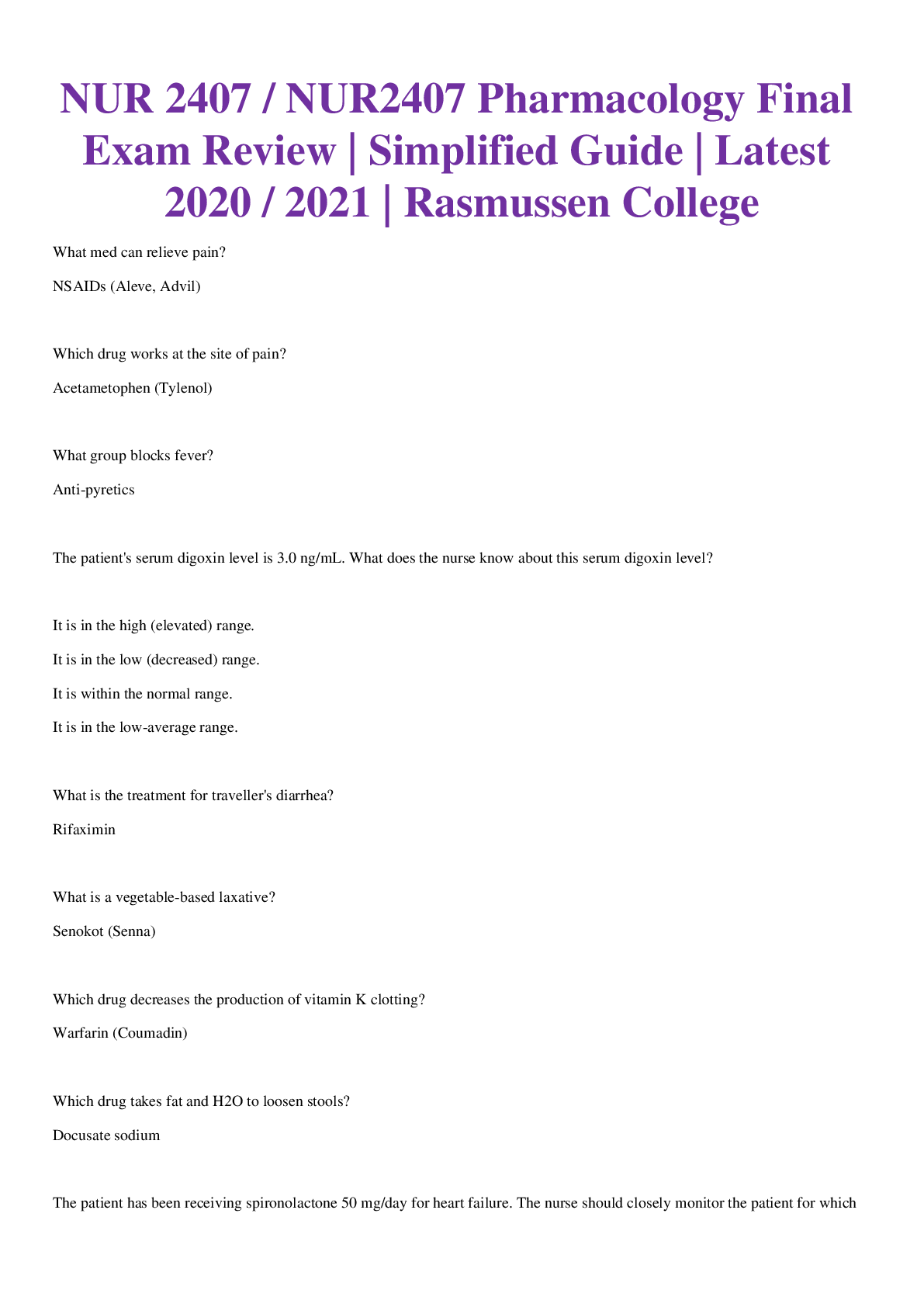*NURSING > EXAM > NR 507 / NR507 Advanced Pharmacology Final Exam | Questions and Answers with Rationale | Already Gra (All)
NR 507 / NR507 Advanced Pharmacology Final Exam | Questions and Answers with Rationale | Already Graded A | Complete Solutions| Latest 2020 / 2021 | Chamberlain College
Document Content and Description Below
NR 507 / NR507 Advanced Pharmacology Final Exam | Questions and Answers with Rationale | Already Graded A | Complete Solutions| Latest 2020 / 2021 | Chamberlain College 1. . Why is prolonged diarrh... ea more severe in children than it is in adults? A. Children have diarrhea more often than adults. B. Less water is absorbed from the colon in children. C. Fluid reserves are smaller in children. D. Children have a higher fluid volume intake. Rationale: Infants have low fluid reserves and relatively rapid peristalsis and metabolism. Therefore the danger of dehydration is great. This selection is the only option that correctly identifies the reason prolonged diarrhea is more severe in children. 2. The two most important risk factors for type 2 diabetes are: A. Autoantibodies and human leukocyte antigen associations B. HLA associations and positive family history C. Autoantibodies and obesity D. Obesity and positive family history Rationale: The two most important risk factors for type 2 diabetes are positive family history and obesity. The other options are not believed to be important risk factors for this form of diabetes. 3. What is the leading cause of infertility in women? A. Polycystic ovary syndrome B. Endometriosis C. Pelvic inflammatory disease D. Salpingitis Rationale: Polycystic ovary syndrome remains one of the most common endocrine disturbances affecting women, especially young women, and is a leading cause of infertility in the United States. 4. Adoption studies have shown that the offspring of an alcoholic parent when raised by nonalcoholic parents have what amount of an increased risk of developing alcoholism? A. Tenfold B. Fourfold C. Threefold D. Twofold Rationale: Adoption studies have shown that the offspring of an alcoholic parent, even when raised by nonalcoholic parents, have a fourfold increased risk of developing the disorder. 5. Which structure attaches skeletal muscle to bone? A. Ligament B. Tendon C. Bursa D. Mesentery Rationale: A tendon is fibrous connective tissue that attaches skeletal muscle to bone. None of the other options are associated with this function. 6. Which term is used to describe an intestinal obstruction caused by the invagination of the ileum into the cecum and part of the ascending colon by collapsing through the ileocecal valve? A. Volvulus B. Intussusception C. Congenital aganglionic megacolon D. Malrotation Rationale: Intussusception is the telescoping or invagination of one portion of the intestine into another section of intestine. Usually, the ileum invaginates the cecum and part of the ascending colon by collapsing through the ileocecal valve. The other terms are not used to describe this event. 7. The tear in a ligament is referred to as a: A. Disunion B. Fracture C. Sprain D. Strain Rationale: Ligament tears are commonly known as sprains. None of the other options are associated with this damage. 8. Which dyskinesia involves involuntary movements of the face, trunk, and extremities? A. Hyperkinesia B. Paroxysmal C. Tardive D. Cardive Rationale: Tardive dyskinesia is the involuntary movement of the face, trunk, and extremities. The other terms do not describe involuntary movements of the face, trunk, and extremities. 9. Which of the following is a lipid-soluble hormone? A. Growth hormone B. Oxytocin C. Epinephrine D. Cortisol Rationale: Cortisol and adrenal androgens are lipid-soluble hormones and are primarily bound to a carrier or transport protein in circulation. The other options are water-soluble hormones. 10. It is true that myasthenia gravis: A. Is an acute autoimmune disease. B. Causes muscle weakness. C. May result in adrenergic crisis. D. Affects the nerve roots. Rationale: Exertional fatigue and weakness that worsens with activity, improves with rest, and recurs with resumption of activity characterizes myasthenia gravis. None of the other options are true of myasthenia gravis. 11. What effect does hyperphosphatemia have on other electrolytes? A. Increases serum magnesium. B. Decreases serum calcium. C. Increases serum calcium. D. Decreases serum magnesium. Rationale: Hyperphosphatemia leads to hypocalcemia; the other options are incorrect. 12. An amniocentesis indicates a neural tube defect when an increase in which protein is evident? [Show More]
Last updated: 1 month ago
Preview 1 out of 17 pages
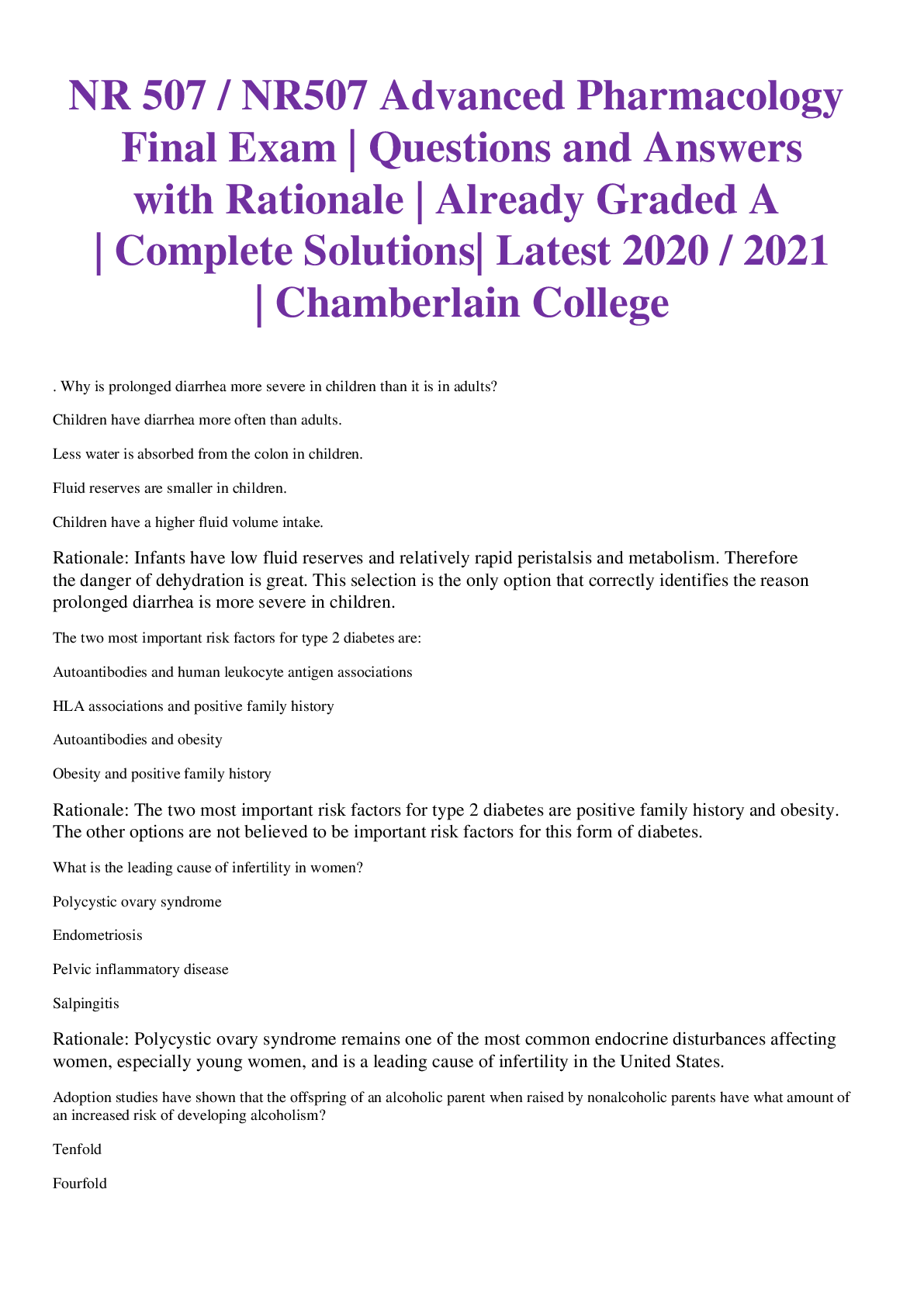
Reviews( 0 )
Document information
Connected school, study & course
About the document
Uploaded On
Dec 18, 2020
Number of pages
17
Written in
Additional information
This document has been written for:
Uploaded
Dec 18, 2020
Downloads
0
Views
53

